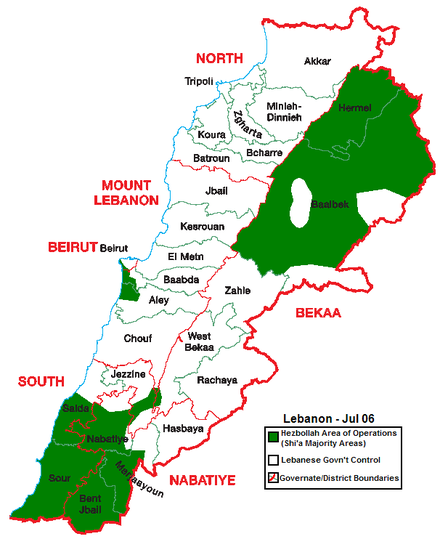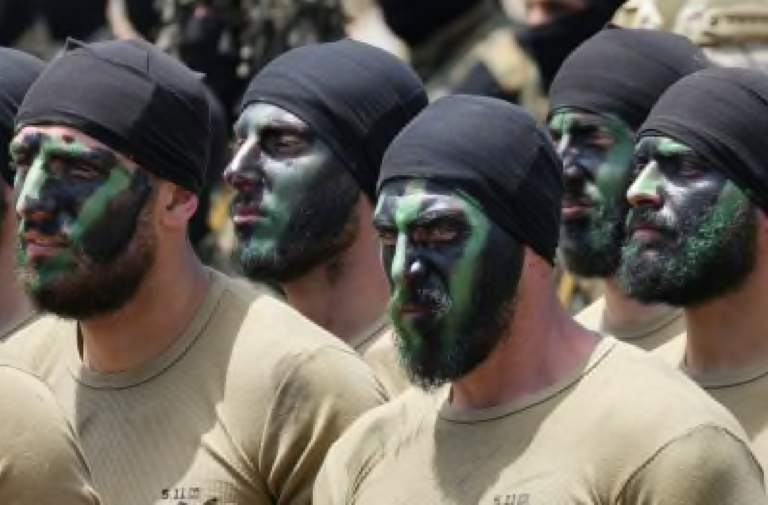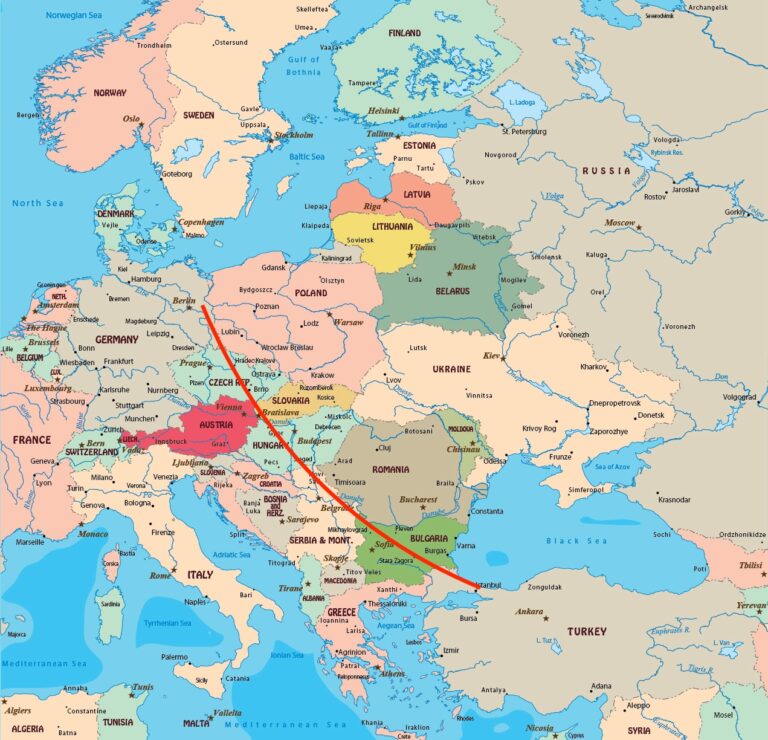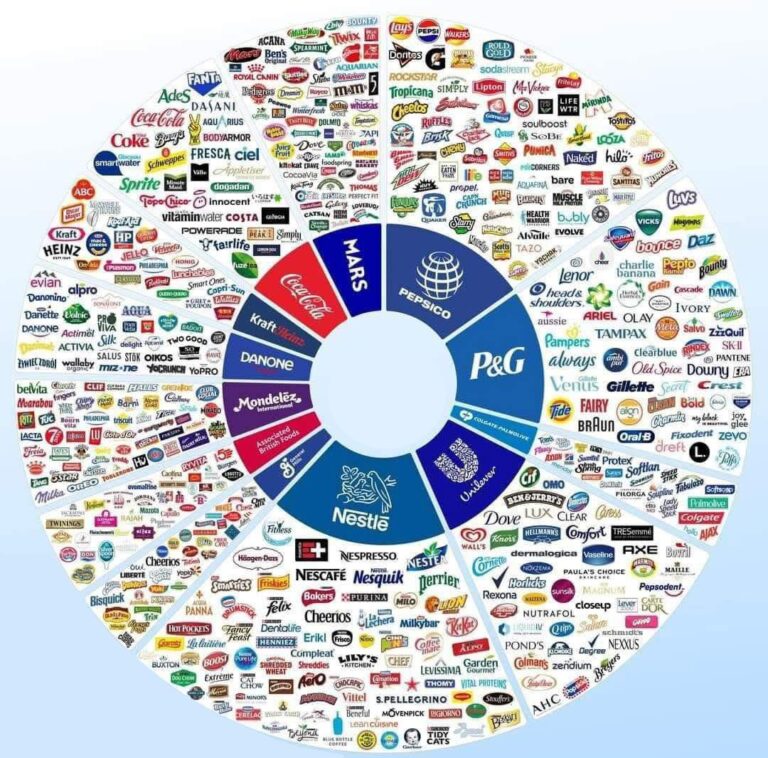By Andrea Tucci,
If not for the ongoing carnage in Gaza, there’s a good chance the spiral of violence between Israel and the Lebanon-based military group Hezbollah would be the Middle Eastern conflict dominating the world’s attention right now.
The fighting has been happening since the day after Hamas’s October 7 attacks, when Hezbollah launched guided rocket strikes against Israel in what it called “solidarity with the victorious Palestinian resistance.” Hezbollah has continually fired rockets and drones into Israel and in return, the Israeli military has launched air and military strikes against the group’s bases in Lebanon in response. Hamas and Hezbollah are both Iran-backed, anti-Israel militant groups, though they differ significantly in ideology and operational approach.
In the first eight months of the fighting, there were at least 4,400 combined strikes from both sides, according to the US-based Center for Strategic and International Studies (CSIS). An estimated 250 Hezbollah members and 75 Lebanese civilians have been killed in the fighting, along with 20 Israelis both civilians and soldiers. More than 60,000 residents of northern Israel have been displaced by the attacks, along with some 95,000 people in southern Lebanon.
Those numbers may pale against the far larger death toll and refugee crisis caused by the fighting in Gaza, but the situation in the north could have been and may yet be far worse than it has been, given the military strength on both sides. The Israeli military is, for its size, one of the most powerful in the world, while Hezbollah is the best-armed non-state group in the world, with an arsenal of between 120,000 and 200,000 rockets and missiles and up to 30,000 active personnel and 20,000 reserves, according to CSIS estimates. If it wanted to, Hezbollah certainly could cause far more damage on Israel than Hamas.
While both sides have seemed to be trying to avoid escalating the fighting into a full-scale war as devastating as the one, they fought in 2006, that doesn’t mean such a war won’t happen anyway. After the latest series of Israeli Defense Forces (IDF) airstrikes in Lebanon, in response to Hezbollah drone attacks, it is expected an “hot summer” on the border.
According to some media reports, the IDF has more troops on the Lebanese border than in Gaza.
Part of the challenge of understanding Hezbollah and what it may do comes from the group’s unique structure. Hezbollah is a hybrid organization that simultaneously acts as a military group fighting Israel, which means that is acting on Iran’s behalf, The group entered the Lebanese cabinet for the first time in 2005 and has held one to three seats in each Lebanese government formed. De facto governing authority in parts of the country.
Its origins date back to the early 1980s, when Israeli troops invaded and occupied part of southern Lebanon in an attempt to drive the Palestine Liberation Organization, then based there, out of the country. With the backing of Iran’s Revolutionary Guards, a group of Lebanese Shiite Muslims took up arms against the Israeli occupation, eventually taking the name Hezbollah, which means “Party of God.”

Hezbollah became known globally for a series of dramatic terrorist attacks, including the bombings of the US embassy and Marine Corps barracks in Beirut in 1983 (the latter of which killed 241 US military personnel), the bombing of a Jewish Community Center in Argentina in 1994, and the 2005 assassination of Lebanese Prime Minister Rafik Hariri.
Israel eventually withdrew its troops from Lebanon in 2000, but that didn’t end the conflict. In 2006, Hezbollah abducted two Israeli soldiers, sparking a two-month war during which Israeli troops invaded southern Lebanon and Hezbollah fired thousands of rockets at Israel. The war ended in a stalemate, though both sides claimed victory.
Hezbollah was also heavily involved in the Syrian civil war, which began in 2011, fighting on behalf of Syrian President Bashar al-Assad’s Iran-backed regime. It still has a significant military presence in Syria, which has periodically been targeted by Israeli airstrikes in recent years.
The experience in Syria, according to many experts, transformed the group’s identity and is necessary to understanding its approach to the current war. Today, it’s a regional power player as much as a resistance movement.

Hezbollah museum located in the south of Lebanon
“Hezbollah’s mission has completely changed since 2006 when their first goal was to fight Israel. Today their job is actually to protect Iran’s interests, not to fight Israel.”
In this respect, it differs from Hamas, which has also received weapons and funding from Iran but acts far more independently. (As it demonstrated in the October 7 attacks, which were likely undertaken without the explicit blessing of its Iranian sponsor.) Hamas is also a Sunni group, as opposed to Shiite Hezbollah, which put the two groups on opposite sides of the Syrian civil war, with Hamas backing the anti-Assad rebels.
In recent years, however, they’ve patched things up, even reportedly maintaining a joint operations center in Lebanon But in contrast to Hamas, Hezbollah has been much more wary (at least until now) about direct confrontation with Israel.
What they want is to build coalitions that constrain Israel’s actions and suffocate them, slowing building toward Israel collapsing from its own internal contradictions.
This approach has spared southern Lebanon the type of scenes now unfolding in Gaza.
A wider regional war could potentially draw in US forces, in order to avoid this dramatic scenario since October they have been sent Navy ships to the Eastern Mediterranean, but at the same time they have been initiated diplomatic efforts to end the fighting between the two sides.
Certainly the Israeli home front is not prepared for the kind of damage that Hezbollah can inflict on Israel, given Hezbollah’s military capabilities, which are much more formidable than those of Hamas.
Moreover the US is pausing some weapons shipments to Israel due to concerns about its offensive in Rafah.
On Gaza, Israel might have enough weapons in its own stocks and from other countries to continue the fight in the south. But if it has to wage a second war as well, its resources might become far more stretched.
The best hope for peace is that both Israel and Hezbollah still have strong individual incentives to avoid a larger conflict.
“Both sides know that an all-out war would be extremely destructive…. INSHALLAH!!!
.



